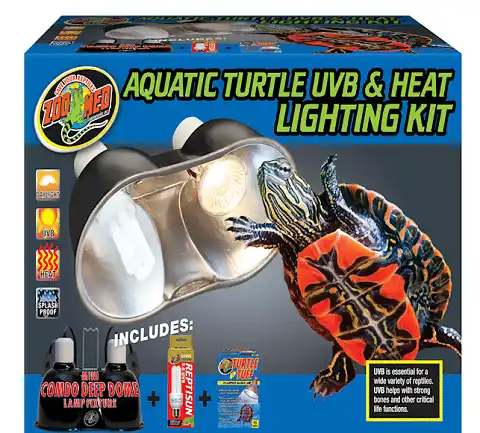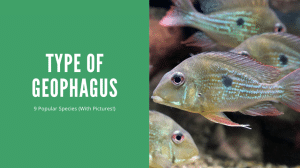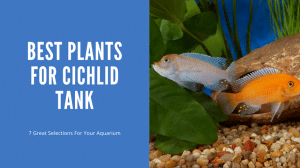Thank you for visiting! By the way… any links on this page that lead to products on Amazon and other stores/partners are affiliate links Aquarium Store Depot earns a commission if you make a purchase.
Are you thinking of getting a pet tortoise? These fascinating reptiles can make wonderful captive animals, although they are a serious long-term commitment and require specialized care. In this guide, we’ll introduce 21 types of tortoise species and discuss their basic care to help you decide if they are the right pet for you.
Let’s get started!
Key Takeaways
- Tortoises are not the same as turtles. Tortoises are terrestrial animals, which means they live on the land.
- Keeping a tortoise is a very long-term commitment, so spend a few weeks on research because this pet might live over 100 years!
- Wild tortoises are in trouble all over the world. Most of the popular pet tortoises are threatened in their natural habitat due to collection for trade and habitat destruction.
- Never buy or keep a wild-caught tortoise. There are plenty of captive breeding animals already in the pet trade so there’s no reason to be removing them from the wild.
What Are They?
Tortoises are amazing four-legged reptiles from the Testudinidae family that have elephant-like feet and a solid shell that covers their back and belly.
These animals are often confused with turtles, although tortoises are terrestrial, which means they live on land and not in the water.
Tortoises are native to North and South America, Asia, Africa, and Europe, where they live in all sorts of different habitats from deserts to forests. There are about 50 different species of tortoise in the world, and they range in size from just 4 inches to monsters like the Galapagos tortoise that weigh over 500 pounds!
Most tortoises are herbivores, but many will include insects and other meaty foods in their diet sometimes. Like all reptiles, they are cold-blooded, so these animals rely on the heat of the sun to stay warm and active. Many of them become inactive in the winter and shelter underground or in crevices until the spring.
One of the most amazing things about tortoises is their longevity. These creatures have a similar lifespan to humans, and some species may even live for over 200 years!
Do They Make Good Pets?
Tortoises are adorable and fascinating creatures, but they are not your typical pet animal. They can be pretty active, and many species will come walking up to you to beg for a snack. However, some species stay shy, and none of them like to be handled.
Depending on where you live, you may be able to keep these animals outdoors in a secure enclosure with plenty of natural vegetation for food, as well as shelter, fresh water, and protection from predators. However, some will require large indoor habitats with temperature and humidity controls.
Keeping a pet tortoise is a huge commitment too, because of their lengthy lifespan. There’s a good chance your pet tortoise will live longer than you, so you need to make sure there will be someone to take good care of him or her.
21 Types Of Tortoise Species
Now that you know a little more about tortoises, let’s meet 21 beautiful species from around the world!
1. Russian
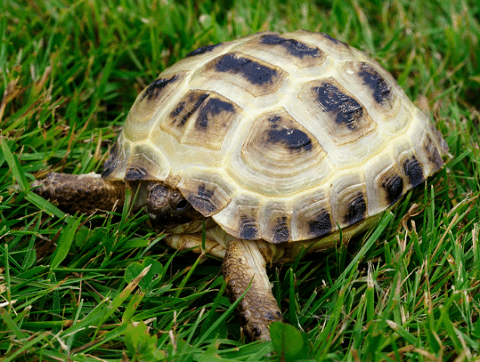
- Scientific Name: Testudo horsfieldii
- Common Names: Russian tortoise, Afghan tortoise, Central Asian tortoise
- Family: Testudinidae
- Origin: Central Asia and the Middle East
- Diet: Herbivore
- Care Level: Easy
- Lifespan: 40 – 50 years
- Color: pale brown with darker spots
- Size: 5 – 10 inches or 13 – 25 cm
The Russian tortoise is one of the most common species available and a great option for your first pet tortoise. This temperature-tolerant species digs a burrow and spends the winter underground to escape the cold. This makes them an excellent choice for outdoor care in cooler climates as long as they have the option to dig in their enclosure.
Unfortunately, the Russian tortoise is listed as vulnerable on the IUCN Red List1 and is still collected in the wild, so please, do the right thing and insist on captive-bred animals only.
2. Marginated
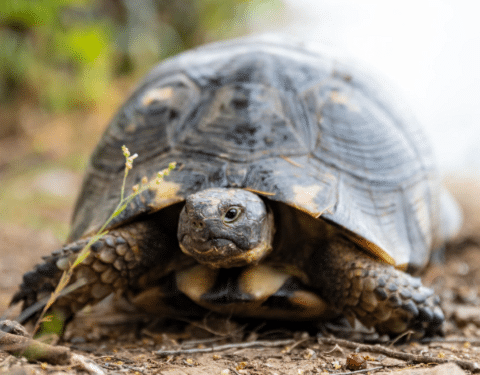
- Scientific Name: Testudo marginata
- Common Names: Marginated tortoise
- Family: Testudinidae
- Origin: Italy and Greece
- Diet: Herbivore
- Care Level: Moderate
- Lifespan: 100+ years
- Color: Mostly dark when adult
- Size: up to 14 inches or 36 cm
This large, elongated tortoise species has a really cool shape, with the rear scutes of their shell flaring out almost like a skirt. They make a great pet because they have a very friendly personality, and they are a perfect choice for outdoor care year-round if you have a large enclosure.
This is a very long-lived species of tortoise, so think about the long-term care of your animal or consider adopting a captive-bred adult.
3. Asia Minor
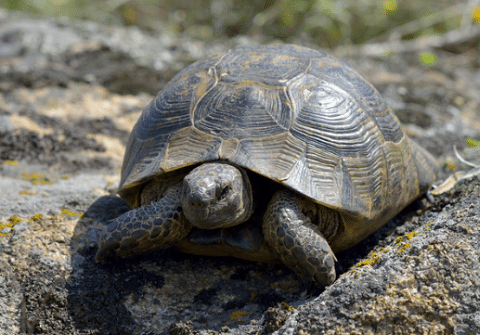
- Scientific Name: Testudo graeca ibera
- Common Names: Asia Minor tortoise, Ibera Greek tortoise
- Family: Testudinidae
- Origin: Turkey
- Diet: Herbivore
- Care Level: Moderate
- Lifespan: potentially 100+ years
- Color: Black/ dark brown and yellow
- Size: can reach 11 inches or 27 cm
The Asia Minor tortoise is a large and popular subspecies of the Greek tortoise. These large tortoises are pretty aggressive toward each other, but very inquisitive around people. They will do best in a large outdoor enclosure but they can be kept indoors on a well-constructed ‘tortoise table’.
4. Eastern Hermann’s
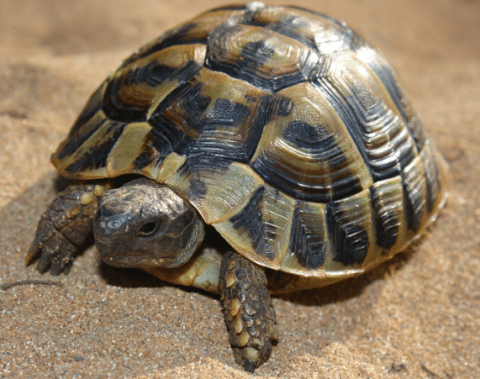
- Scientific Name: Testudo hermanni boettgeri
- Common Names: Eastern Hermann’s tortoise
- Family: Testudinidae
- Origin: Southeastern Europe
- Diet: Vegetarian
- Care Level: Moderate
- Lifespan: 30 – 50+ years
- Color: Black and tan
- Size: 6 – 11 inches or 15 – 27 cm
A common favorite, the Eastern subspecies of Hermann’s tortoise is the largest and makes a great outdoor pet. These tortoises have it all, great looks, personality, ease of care, and they can survive outside during all months of the year. They are also easy to breed and readily available, so there’s no reason to buy wild-caught specimens.
5. Western Hermann’s
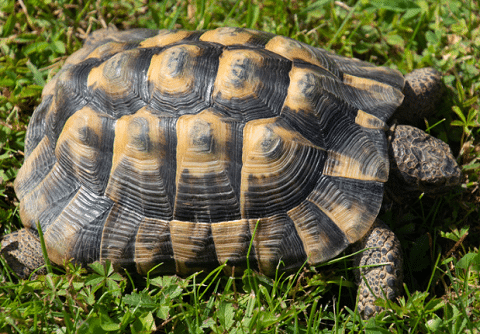
- Scientific Name: Testudo hermanni hermanni
- Common Names: Western Hermann’s tortoise
- Family: Testudinidae
- Origin: France, Italy, Spain
- Diet: Herbivore
- Care Level: Moderate
- Lifespan: 30 – 50+ years
- Color: Black and yellow
- Size: 4 – 8 inches or 10 – 20 cm
The western subspecies of Hermann’s tortoise is smaller, rarer, and more colorful than the eastern form. These beautifully colored tortoises stay at a manageable size and are easy to care for, making them a wonderful pet for dedicated tortoise keepers.
Depending on where you live, there’s a good chance that you can keep these animals outdoors all through the year.
6. Dalmatian Hermann’s

- Scientific Name: Testudo hermanni hercegovinensis
- Common Names: Dalmatian Hermann’s tortoise
- Family: Testudinidae
- Origin: Southern Europe
- Diet: Herbivore
- Care Level: Moderate
- Lifespan: 30 – 50+ years
- Color: Black and tan
- Size: 5 – 6 inches or 12.5 – 15 cm
The Dalmatian Hermann’s Tortoise is a small form of the Hermann’s tortoise species. They are intermediate between the larger eastern form and the colorful western form, and their care is very similar.
7. Sulcata
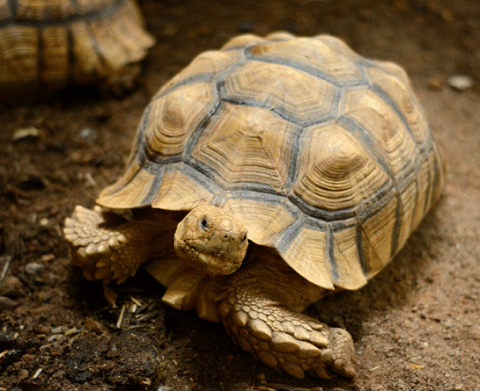
- Scientific Name: Centrochelys sulcata
- Common Names: Sulcata tortoise, African spurred tortoise
- Family: Testudinidae
- Origin: Southern Sahara Desert in Africa
- Diet: Herbivore
- Care Level: Moderate
- Lifespan: 70+ years
- Color: Adults are brown
- Size: 25 – 30 inches or 64 – 89 cm
The sulcata tortoise is the world’s third-largest tortoise species, so this is one species you probably can’t keep in your living room! These giant reptiles should be kept outdoors, ideally in a warm, dry climate that matches their natural environment.
Sulcata tortoises are herbivores that graze on grass and other vegetation. They require a low-protein, high-fiber diet of grass and leaves and adults will eat some types of hay. These animals also need everyday access to water for drinking and soaking.
8. Greek
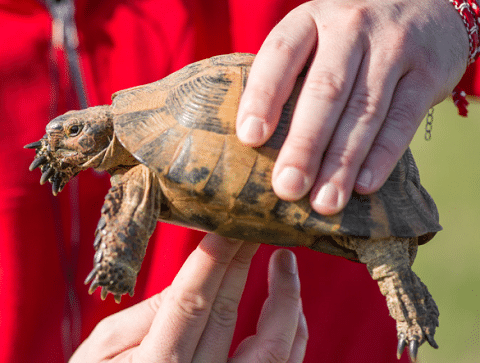
- Scientific Name: Testudo graeca
- Common Names: Spur-thighed tortoise
- Family: Testudinidae
- Origin: Southwest Asia to Southern Europe and North Africa
- Diet: Herbivore
- Care Level: Moderate
- Lifespan: 50+ years
- Color: Yellowish and black
- Size: 5 – 8 inches or 12 – 20 cm
The Greek tortoise is a popular species that can make an excellent pet if given the right housing and care. These small tortoises reach a manageable maximum size of just 8 inches or so, making them a good choice for indoor care in a temperature-controlled environment with UVB lighting.
9. Indian Star

- Scientific Name: Geochelone elegans
- Common Names: Indian star tortoise
- Family: Testudinidae
- Origin: India, Pakistan, & Sri Lanka
- Diet: Herbivore
- Care Level: Difficult
- Lifespan: 30 – 55 years
- Color: Black and yellow
- Size: 7 – 15 inches or 18 – 38 cm
The Indian star tortoise is a boldly marked species with a spectacular shell pattern. This species can be kept outdoors, but it will not survive freezing temperatures, so many keepers house them indoors during the winter.
Unfortunately, Indian star tortoises are vulnerable and particularly threatened by illegal trade, so always insist on captive-bred specimens.
10. Red Footed
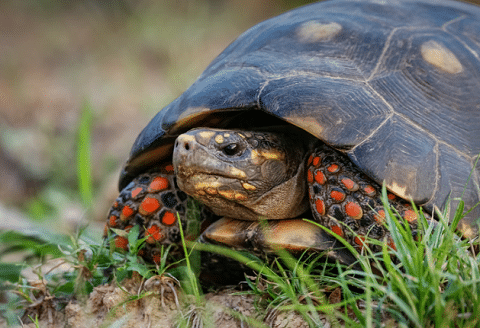
- Scientific Name: Chelonoidis carbonarius
- Common Names: Red-footed tortoise
- Family: Testudinidae
- Origin: South America
- Diet: Omnivorous
- Care Level: Intermediate
- Lifespan: 30+ years
- Color: Dark shell with pale spots, red markings on legs and face
- Size: up to 15 inches or 38 cm
Named for the colorful spots on their skin, the red-footed tortoise is a beautiful and popular species that does well in captivity. This interesting species grows to a medium size and features a dark shell with three rows of yellow spots.
Interestingly, these tortoises are considered omnivorous, so they need the occasional meaty treat like insects or even cat or dog food.
11. Aldabra Giant

- Scientific Name: Aldabrachelys gigantea
- Common Names: Aldabra giant tortoise, Seychelles giant tortoise
- Family: Testudinidae
- Origin: Aldabra Island
- Diet: Mostly herbivorous
- Care Level: Moderate
- Lifespan: may live for over 200 years
- Color: Dark brown
- Size: 48 inches or 120 cm
The Aldabra giant tortoise is the world’s second-largest species, beaten only by the incredible Galapagos tortoise. This massive reptile can live for two centuries and reach weights of well over 500 pounds, so they need plenty of space for long-term care. You may be able to keep a hatchling indoors, but after a year or two you’ll want to move these giant tortoises outdoors.
12. Burmese Star

- Scientific Name: Geochelone platynota
- Common Names: Burmese star tortoise
- Family: Testudinidae
- Origin: Myanmar
- Diet: Herbivore
- Care Level: Moderate
- Lifespan: 50+ years
- Color: Dark brown and yellow
- Size: up to 14 inches or 35 cm
The Burmese star tortoise is a beautiful reptile species that can be housed outdoors in summer, although they do not survive temperatures below freezing. Sadly, this critically endangered species of tortoise from Myanmar is now more common in captivity than out in its natural habitat. While captive breeding may one day save the species, continued poaching has made them functionally extinct in the wild.
13. Desert

- Scientific Name: Gopherus agassizzi
- Common Names: Desert tortoise
- Family: Testudinidae
- Origin: Southwestern United States and Mexico
- Diet: Herbivore
- Care Level: Moderate
- Lifespan: 50 – 80 years
- Color: Brown
- Size: 10 – 14 inches or 25 – 35 cm
Desert tortoises live in the extreme conditions of the Mojave and Sonoran deserts. These fascinating creatures do great outdoors in similar climates but need extra care in colder, more humid areas. Unfortunately, this species is critically endangered in the wild and is illegal to keep in various southwestern States in the US.
14. Leopard
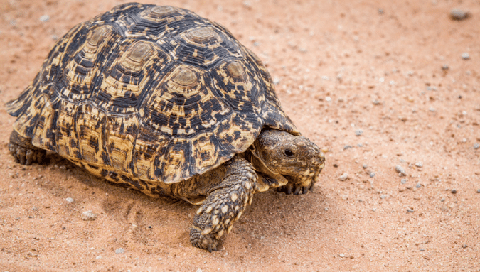
- Scientific Name: Stigmochelys pardalis
- Common Names: Leopard Tortoise
- Family: Testudinidae
- Origin: Southern & East Africa
- Diet: Herbivore
- Care Level: Advanced
- Lifespan: 80 – 100 years
- Color: Speckled or pale brown
- Size: Usually 10 – 20 inches or 25 – 50 cm
The leopard tortoise is a large and widespread African species from semi-arid grasslands and savannas. The largest specimens can reach up to 30 inches and 80 pounds, although most will max out at less than half that size. Leopard tortoises do best outdoors but will need a temperature-controlled indoor habitat if you live in a cold area.
Like all tortoise species, the leopard tortoise does not enjoy being handled. However, this species is relatively peaceful towards other tortoises, so you can keep them in a group in a large enough enclosure.
15. Egyptian
- Scientific Name: Testudo kleinmanni
- Common Names: Egyptian tortoise, Kleinmann’s tortoise, Leith’s tortoise
- Family: Testudinidae
- Origin: Libya to Palestine
- Diet: Herbivore
- Care Level: Moderate
- Lifespan: 20+ years
- Color: Pale tan with darker markings
- Size: 4 inches or 10 cm
The Egyptian tortoise (video source) is one of the world’s smallest tortoise species. These tiny tortoises are native to the coastal areas of North Africa, where sadly, they are nearly extinct in the wild. These desert dwellers should be housed indoors in a temperature and humidity-controlled environment.
16. Pancake
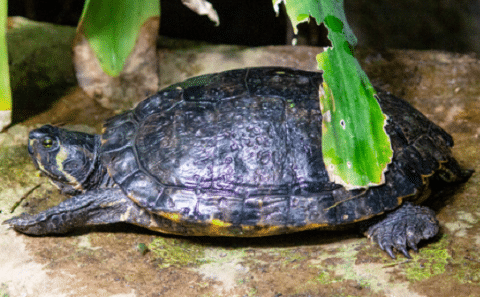
- Scientific Name: Malacochersus tornieri
- Common Names: Pancake tortoise
- Family: Testudinidae
- Origin: East Africa
- Diet: Herbivore
- Care Level: Moderate
- Lifespan: 20+ years
- Color: Dark brown with paler markings
- Size: up to 7 inches or 17 cm
The Pancake tortoise gets its name from its strange, flattened shell shape which allows them to shelter in rock cracks and crevices. Although it can be kept outdoors in suitable climates, this species also does well in a large (40-gallon+) terrarium with UVB light and heating.
Unfortunately, this critically endangered species is a slow breeder, and wild populations have collapsed due to collection for the pet trade.
17. Gopher
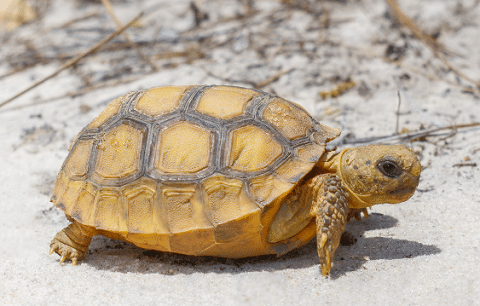
- Scientific Name: Gopherus polyphemus
- Common Names: Gopher tortoise
- Family: Testudinidae
- Origin: Southeastern United States
- Diet: Herbivore
- Care Level: Moderate
- Lifespan: 40+ years
- Color: Dark brown when fully grown
- Size: 10 – 16 inches or 25 – 40 cm
The Gopher tortoise is a burrowing reptile from North America that spends most of its time underground. This herbivorous species feeds mainly on grasses, although it needs a balanced diet of various plants to stay healthy. It is illegal to keep this protected species in most states, although permits may be granted in Florida under certain conditions.
18. Hingeback
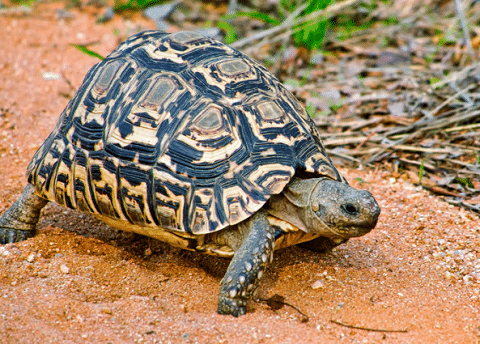
- Scientific Name: Kinixys spp.
- Common Names: Hingeback tortoises
- Family: Testudinidae
- Origin: Africa
- Diet: Omnivorous
- Care Level: Advanced
- Lifespan: years
- Color: Brown
- Size: 6 – 11 inches or 15 – 22 cm
Hingeback tortoises are interesting creatures from the Kinixys genus that can partially close their shell. There are many species, although the Home’s hinge-back tortoise is the most common in captivity.
Unfortunately, many of the hinge backs sold in the United States are wild caught and arrive in bad shape after being shipped from Africa, a practice that should not be supported. Unless you’re certain the animal is captive-bred, choose a different species.
19. Elongated

- Scientific Name: Indotestudo elongata
- Common Names: Elongated tortoise
- Family: Testudinidae
- Origin: Southern and Southeast Asia
- Diet: Omnivore
- Care Level: Moderate
- Lifespan: 40 – 50 years
- Color: Yellowish to dark brown
- Size: 12 inches or 30 cm
The elongated tortoise is an omnivorous land tortoise species found in Asian forest habitats. These creatures usually hide out below the leaf litter and become most active in the mornings and evenings. They can be shy, but after a while, they might come out to meet you hoping for a tasty snack.
This small tortoise makes a great pet if you can provide them with the warm environment they need to survive. However, it is not adapted to cold winters and requires a large enclosure with dry and humid areas.
20. Yellow-footed
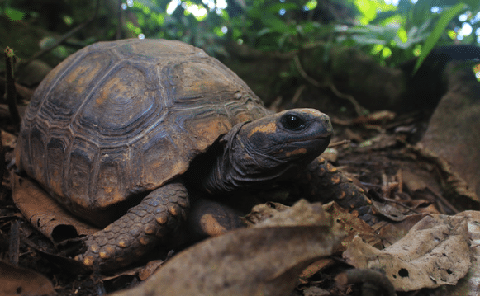
- Scientific Name: Chelonoidis denticulatus
- Common Names: Yellow-footed tortoise, Brazilian giant tortoise
- Family: Testudinidae
- Origin: Amazon Basin
- Diet: Omnivore
- Care Level: Moderate
- Lifespan: 50+ years
- Color: Dark brown with pale yellowish spots
- Size: 14 – 30 inches or 36 – 76 cm
The Yellow-footed tortoise is a large South American species with yellowish markings on their legs and the sides of their face. Older adults turn pretty dark, but the adorable youngsters can be really colorful.
This species needs a shady environment but should have access to some natural sunlight or a UVB lamp every day. Yellow-footed Tortoises also love to bathe, so they will appreciate a shallow tub of fresh water where they can take a dip.
21. Galapagos
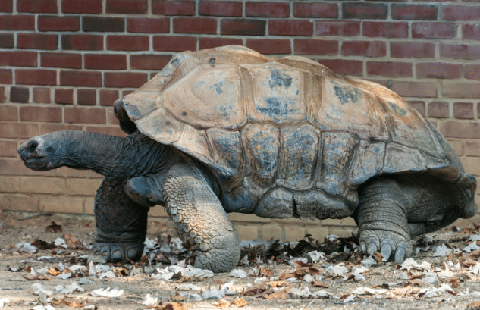
- Scientific Name: Chelonoidis niger
- Common Names: Galapagos tortoise
- Family: Testudinidae
- Origin: Galapagos Islands
- Diet: Herbivore
- Care Level: Difficult
- Lifespan: up to 175 years
- Color: Black
- Size: 6 feet or 1.8 meters
The Galapagos tortoise is the world’s largest species, sometimes reaching nearly 900 pounds! These huge black tortoises are occasionally available for sale, although they are extremely expensive pets and may require a special permit depending on your state. These massive reptiles require a large space with warm temperatures, plenty of greenery, and a nice water hole.
Basic Care
Extensive research is required before buying any tortoise because each species has slightly different care requirements, depending on where it lives in nature. Of course, a species that lives in evergreen forests is not going to feel at home in the same habitat as a Sonoran desert tortoise!
However, there are some basic principles that apply to all tortoise breeds and species. Let’s take a look at the basics of tortoise care.
Housing
Tortoises can be kept in a variety of enclosures, ranging from a large terrarium for some small species to large outdoor enclosures the size of your average backyard. Where you keep your tortoise depends on its species and the climate where you live.
Across much of North America, tortoises can be kept outdoors for most of the year, and some Mediterranean species will be happy outside all year. Many tortoise breeds will bury themselves underground or hide away in deep shelter to wait out the winter, so it’s normal for them to disappear when it gets cold and then reappear in the spring.
If you live in an area with very cold winters or if you keep a tropical species, you’re going to need to keep your tortoise indoors or at least move your pet to an indoor enclosure for the coldest months of the year.
No matter what kind of enclosure you choose, the following basic rules apply:
Security
Your enclosure must be safe from dogs, and other predators like birds of prey. People also steal pets, so make sure the area is secure. You’ll want a mesh cover over any enclosure that holds small tortoises.
Substrate
Your enclosure needs a deep substrate that can hold onto moisture and allow your tortoise to burrow. Do not keep tortoises on hot asphalt or paved surfaces.
Safety
Your enclosure must be surrounded by a wall high enough to prevent your turtle from escaping or falling and injuring itself.
Comfort
Your tortoise’s enclosure must have areas of sunlight or UVB light and areas of shade. There should be plenty of shelters available such as caves, hollow logs, or anything snug and insulated where your tortoise can hide out. Some species shelter in rock crevices while others crawl under leaf litter.
Handling
Some tortoises will become confident in time, and many will come up to you whenever you get near their enclosure. However, they are not social and affectionate pets like dogs, so this is one animal you should avoid handling as much as possible.
Diet
Most tortoise species are herbivores that graze on grass, weeds, and other plants. Some species, like the yellow-footed and red-footed tortoises, are omnivores that will include insects and animal carcasses in their diet.
Most tortoises can be fed a balanced diet of fresh greens, weeds, flowers, and other fresh plant material. Fruits are high in sugar and should only be offered as a rare treat. However, it’s extremely important to research the specific diet of your particular tortoise species.
Water
Tortoises must have access to clean, fresh water at all times. They will drink from a shallow bowl, and many species love to crawl into water to cool off and soak up some moisture. Make sure your water container will not tip over and that it has shallow sloping sides so that your pet does not become trapped and drown.
Lighting
Tortoises, require UVB light to maintain healthy vitamin D3 levels. The best source is always natural sunlight out in nature, and normal artificial light sources will not keep them healthy. Tortoises kept indoors need a special UVB light source in their enclosure.
This UVB kit from Zoo Med offers a good value and is perfect for new turtle keepers
UVB light strips or bulbs can be used, but make sure you suspend bulbs 10 to 12 inches above the animal. These bulbs should be replaced after 4 to 6 months at the most as they become less effective over time.
Humidity
Despite living in many dry parts of the world, tortoises naturally seek out moist areas to stay hydrated. Captive tortoises should have access to both dry and moist areas in their enclosure so that they can decide when to seek humidity.
A healthy tortoise should have a smooth domed shell. Without enough humidity, tortoises often develop a condition known as pyramiding which causes raised scutes on their shell.
Heating
Tortoises that are kept indoors need heating during the day to simulate the conditions in their natural environment. Use a heat lamp and not a heating pad for this purpose, and make sure there is a warm basking spot and a cooler area so your tortoise can choose where it wants to be.
Make sure to turn off the heat each night because your pet needs to cool off just like it would in nature. Running your heat lamp and UVB source on a timer is a safe and convenient option.
Which Types Of Tortoise Should You Keep?
Once you’ve done all your research and you’re absolutely sure you have the dedication to keep such a long-lived pet, your next decision is to choose which pet tortoise species is right for you.
Choose a healthy, captive-bred tortoise from a reputable breeder who knows these animals well and can provide detailed information and advice on their care.
Wild tortoises taken from their rightful home are often in very poor health when they get to your home, and many die because they can’t adjust to the new environment.
Conservation
Almost every one of the tortoise species mentioned in this guide is threatened in its natural habitat, and some are practically extinct in the wild.
The reasons for their decline vary depending on the species, but habitat destruction, hunting, and legal and illegal collection for the pet trade are the most common causes.
There is no excuse to support the illegal trade in wildlife, so never buy a tortoise that wasn’t legally bred in captivity.
FAQs
What is the best tortoise as a pet?
Captive-bred Mediterranean species like Hermann’s tortoises and Greek tortoises are some of the best pet tortoise species. These animals stay at a manageable size and can be kept both indoors or outdoors depending on where you live.
What is the most common type of tortoise?
The Greek tortoise is one of the most common species in the pet trade. Greek tortoises make wonderful and extremely long-lived pets for dedicated keepers.
What kind of tortoise doesn’t get big?
Russian tortoises, Greek tortoises, and Hermann’s tortoises are small to medium-sized species ideal for captive care. Common species like the leopard tortoise and the sulcata tortoise get really, really big, so make sure you know the true identity of a tortoise species before buying it.
How many tortoise species are there?
Depending on who you ask, there are between 49 and 54 known tortoise species in the world. Southern Africa is home to the greatest diversity of species on the planet, although you can find these captivating animals on five different continents.
Are there any tortoises native to North America?
North America is home to several native tortoise species, including the desert tortoise, the gopher tortoise, the Texas tortoise, and the bolson tortoise.
Final Thoughts
Tortoises are not for everyone. These special creatures need the right habitat and care to survive to their full potential. However, for the dedicated keeper, tortoise ownership can be a wonderful lifelong hobby.
Thanks for reading along, I hope the information in this guide has helped you learn more about tortoises and whether they are the right pet for you!
Do you keep a pet tortoise? Tell us about your favorite species in the comments below!
- About the Author
- Latest Posts
I’m thrilled that you found Aquarium Store Depot! Here you’ll find information on fish, aquariums, and all things aquatics related. I’m a hobbyist (being doing this since I was 11) and here to help other hobbyists thrive with their aquariums! I adhere to a high quality Editorial Process and Review products with real life field usage and practical analysis.


